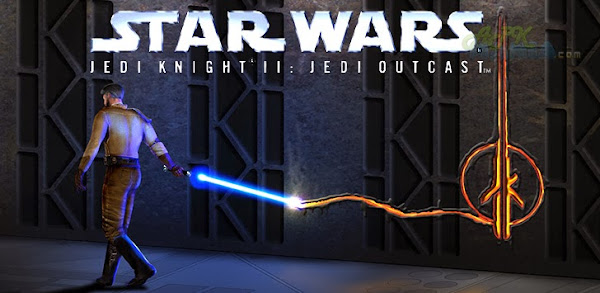

Unlike Jedi Outcast, Jedi Knight contains two different endings.

In Jedi Knight players can utterly destroy their enemies with the power of the dark side, but there are consequences. Jedi Outcast's story decisions appear even worse when considering the structure of its predecessor, Dark Forces II: Jedi Knight. Its completely fine considering that the point of the game is to be a power fantasy, but it undermines the game's reasons for not giving player's the lightsaber at the start of the game. Kyle gets to go nuts, and it in no way affects his mental state. Players, as Kyle, brutalize the enemy, using dark side powers like lightning and Force choke with impunity. In Jedi Outcast, Kyle is supposed to be wrestling with the dark side and worried about going bad, but this is not reflected in the gameplay. The problem with this storyline, and its reasoning for withholding Kyle's lightsaber, is that it makes no sense given the gameplay of Jedi Knight 2 : Jedi Outcast. Kyle eventually embraces the Force again, and the lightsaber shenanigans begin, but its only after his dear friend Jan Ors is seemingly killed by a Sith. Players do not have a lightsaber at the start of Jedi Outcast because the game is continuing the story established in the prior games. Related: All 11 Star Wars Games Where Darth Vader Is A Playable Character Following his temptation, Kyle abandons the ways of the Jedi, believing himself unworthy. In the game, Kyle briefly turns to the dark side only to be saved by Mara's compassion. Mysteries of the Sith follows Kyle's apprentice Mara Jade as she searches for Kyle after he goes missing. In Dark Forces, Kyle is just a gun-totting grunt, but in Dark Forces II he becomes a Jedi while pursuing the Dark Jedi Jeric. All the games concern Kyle Katarn, an imperial officer turned rebel mercenary. Prior to Jedi Knight 2 : Jedi Outcast, there were three games in the series: Dark Forces, Dark Forces II Jedi Knight, and Mysterious of the Sith, an expansion to the Dark Forces II.


 0 kommentar(er)
0 kommentar(er)
